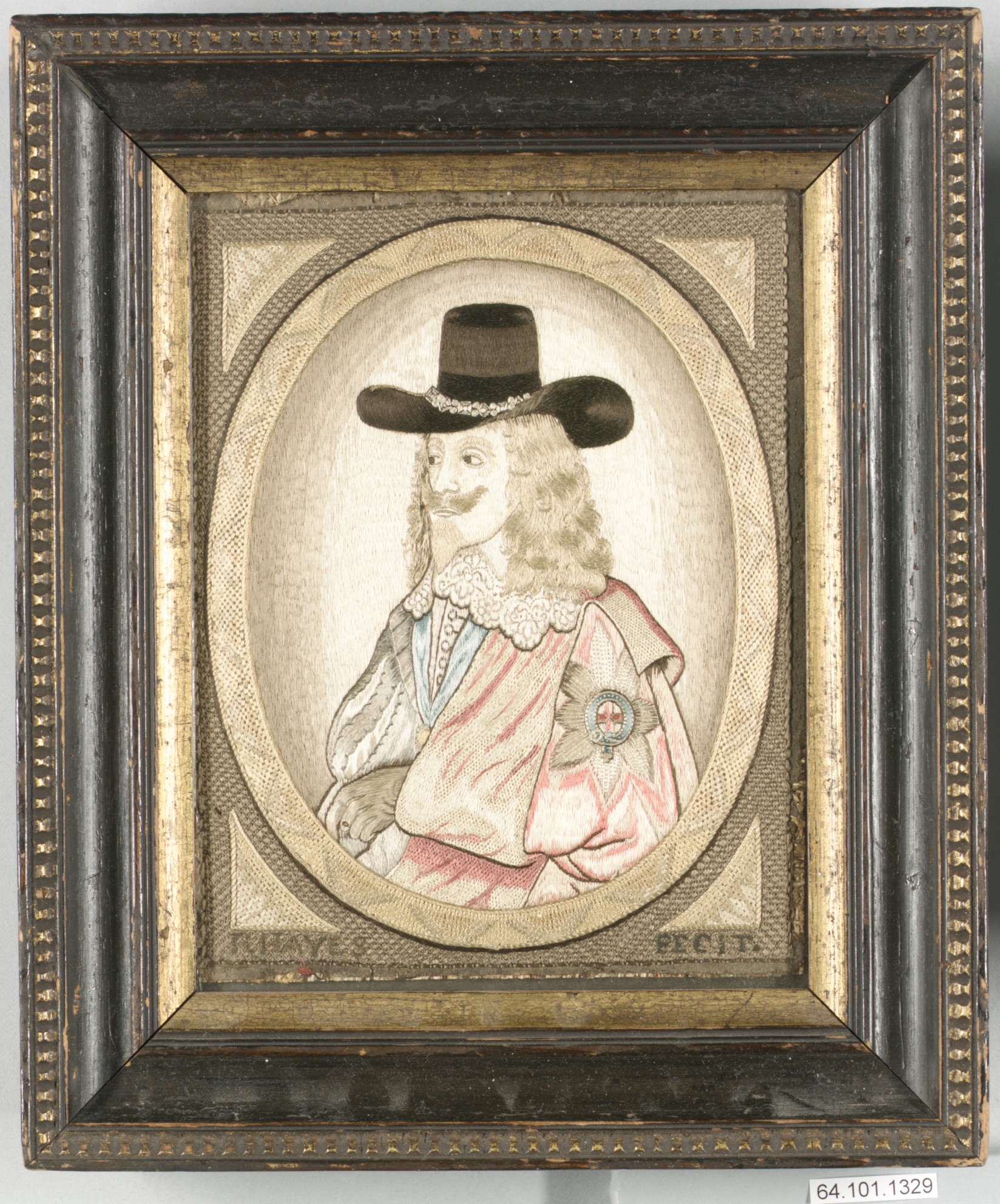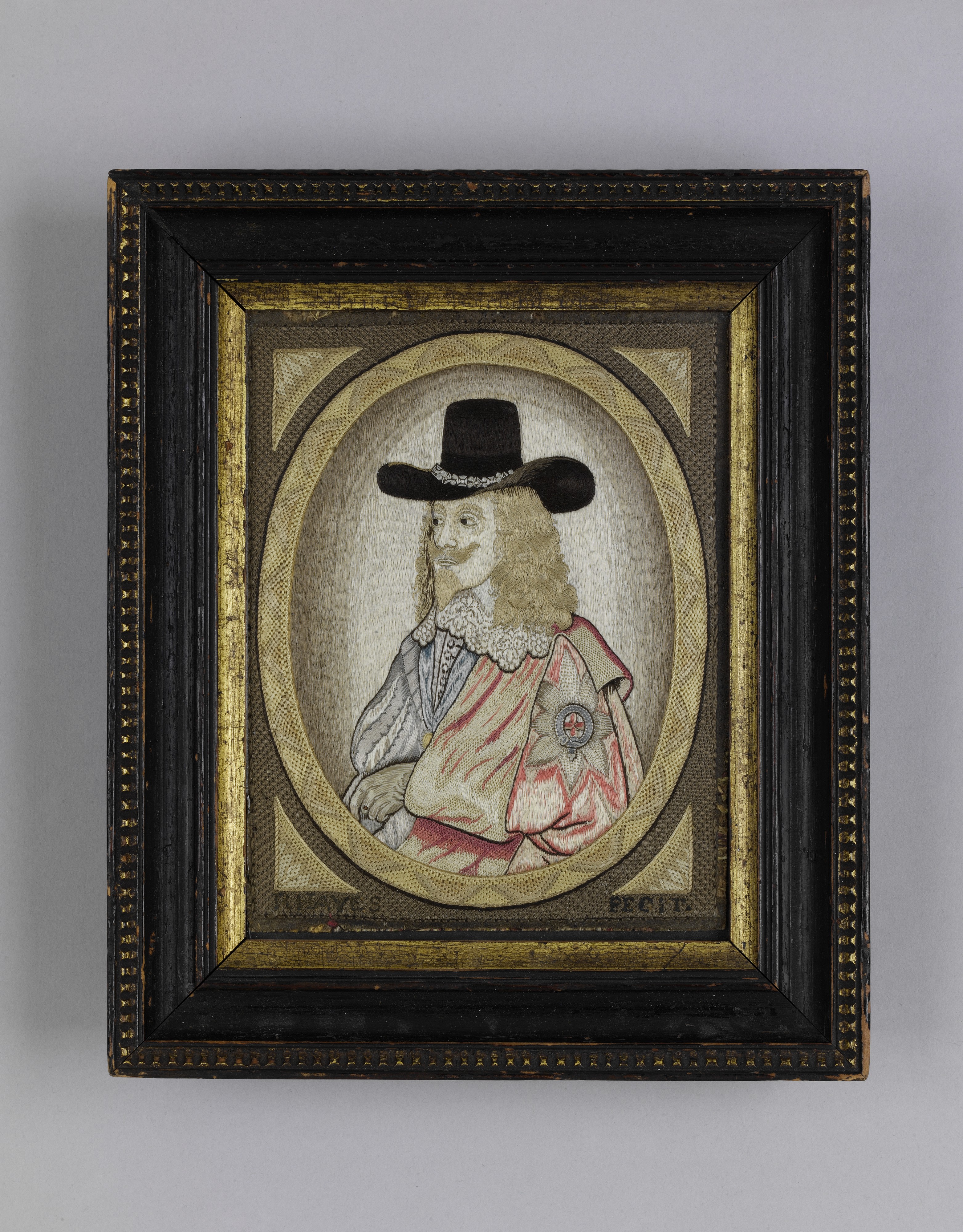Charles I
Embroidered by R. Hayes
After a painting by Edward Bower British
Not on view
This portrait is worked with large stitches that mimic engraved or etched cross-hatchings, which, along with the framing device, link the portrait to the print medium from which it is derived. This graphic effect is particularly apparent in the brick stitch used as the ground in the border around the oval frame. It is unusual that the embroiderer has adopted the printmakers’ and painters’ convention of signing his work at the bottom of the image: "R. Hayes Fecit." This claim to professional status makes it likely that R. Hayes was indeed a professional embroiderer, and this is consistent with the evenness of stitching. It is most evident in the rendering of Charles’s flowing hair, where the embroiderer has articulated the graceful ringlets by twisting the silk floss at the tips of the gathered curl to create a play of light that closely approaches the nature of human hair.
The embroidery is derived from a popular image of Charles I, which was made after his execution and exists in at least two prints: an engraving by Edward Bower, published by Robert Preeke in 1649, and an etching produced by Wenceslaus Hollar in the same year (MMA, 17.50.85). Although Yvonne Hackenbroch suggests the former as the direct print source for this embroidery, it is in fact closer to the Hollar version, in the exact transcription of the pose, in the king’s size and position relative to the oval surround, and in such details as the gloved hand and the cloak embroidered with the emblem of the Order of the Garter. John Peacock has posited that the Hollar portrait drew upon the painted portrait of Charles I Wearing the Garter Star of about 1632 by Anthony van Dyck and an "idiosyncratic" etching of Charles I by George Lid, published as a frontispiece of A Continuation of Lucan of 1630. From the former, he derived the general disposition of pose and details of costume, including the emblazoned Garter Star, and from the latter, the idea of showing the king wearing a broad-brimmed hat. That Charles wears the hat in several posthumous prints and in the embroidered portrait is a probable reference to his attire in court, when, as Hackenbroch pointed out, "Charles declined to take his hat off during the trials lest this gesture be interpreted as a sign of respect towards his Judges." In the embroidered portrait, this reference, combined with an aureole of light emanating from behind him, confers upon the image of the king both the specificity of an historical memory and an iconic aura appropriate to its commemorative function.
[Jonathan Tavares, adapted from English Embroidery from The Metropolitan Museum of Art, 1580-1700: 'Twixt Art and Nature / Andrew Morrall and Melinda Watt ; New Haven ; London : Published for The Bard Graduate Center for Studies in the Decorative Arts, Design, and Culture, New York, The Metropolitan Museum of Art, New York [by] Yale University Press, 2008.]
Due to rights restrictions, this image cannot be enlarged, viewed at full screen, or downloaded.
This artwork is meant to be viewed from right to left. Scroll left to view more.




